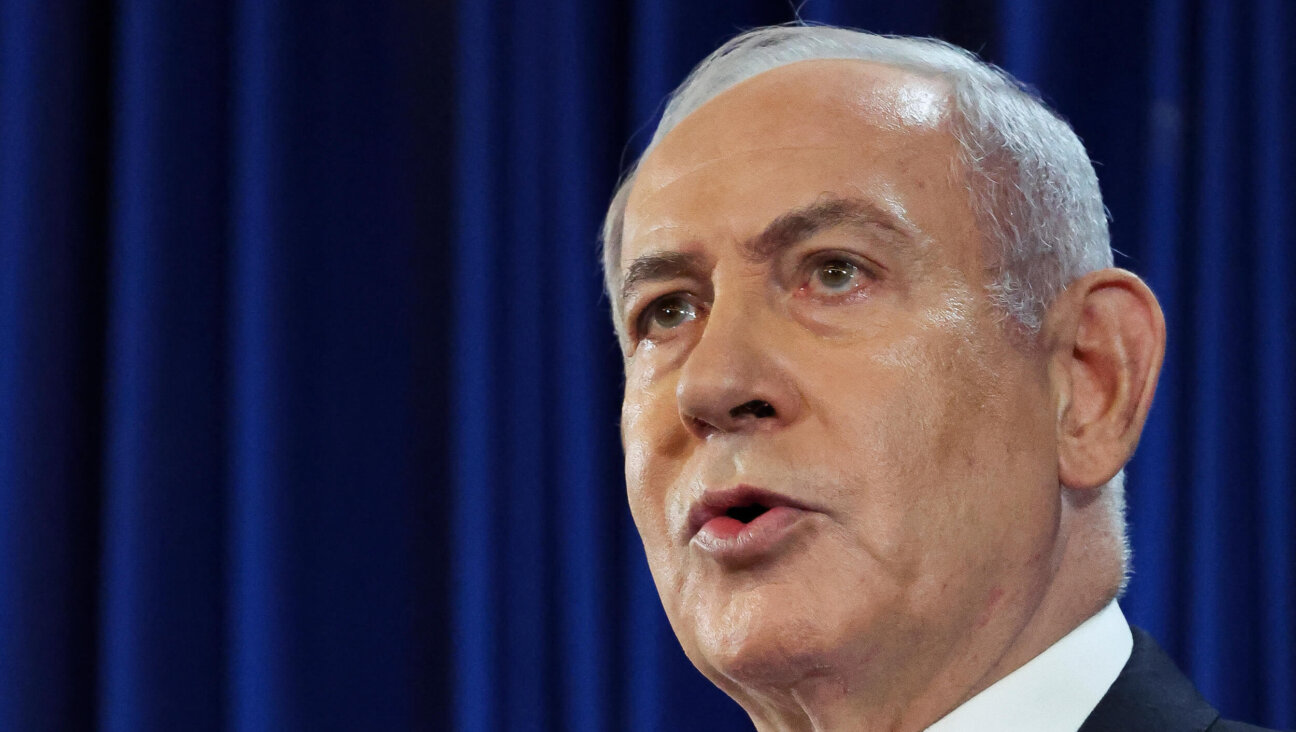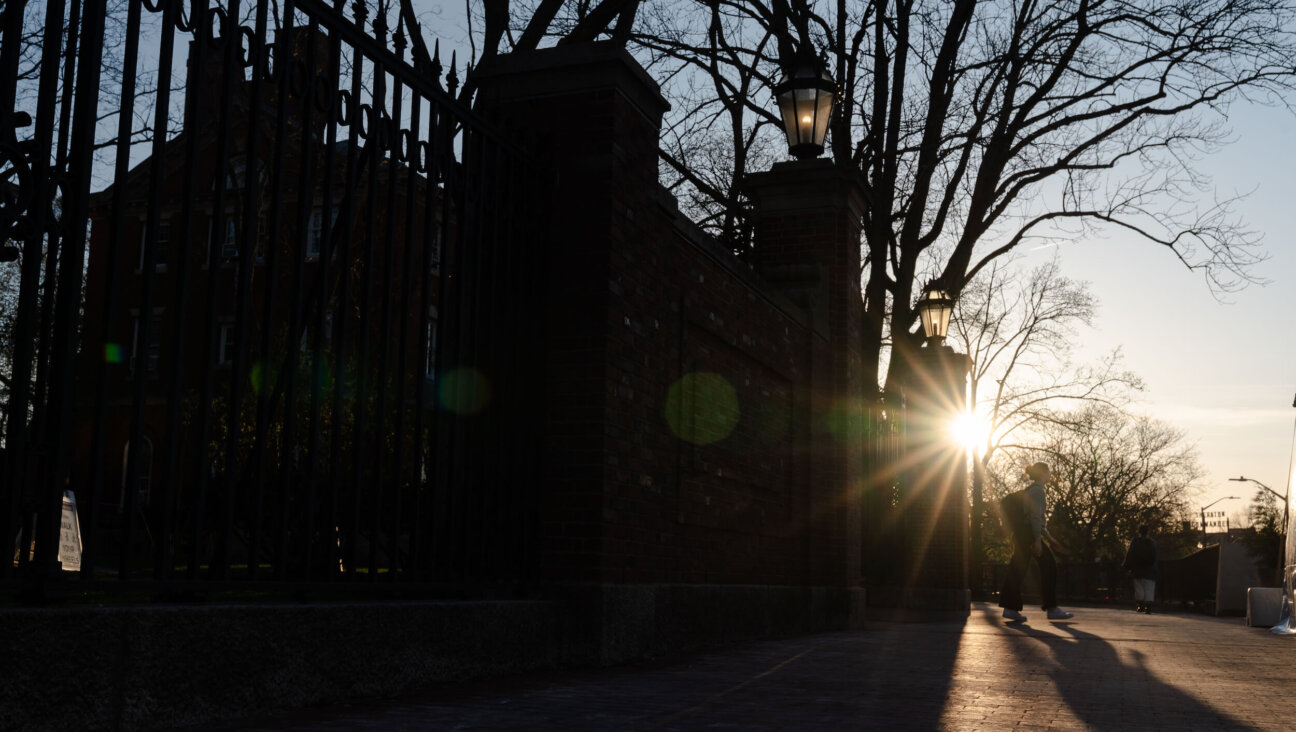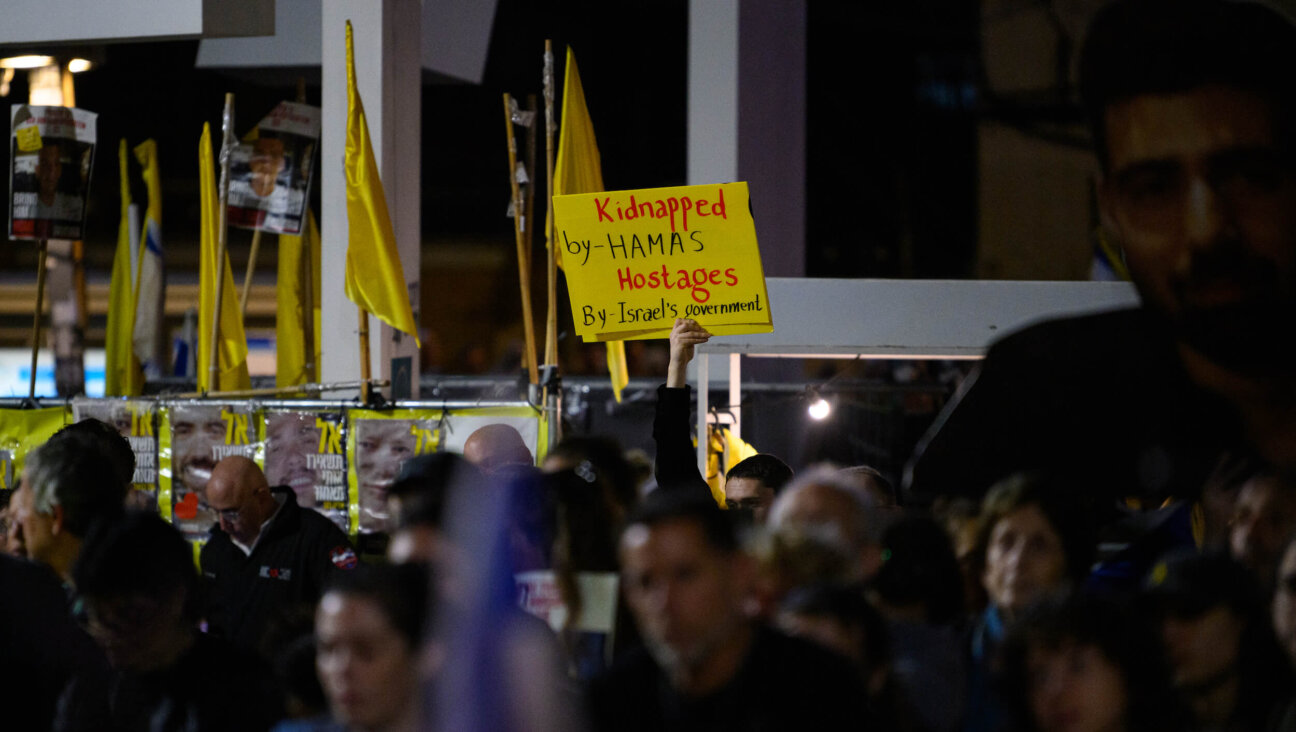What the Congress Gave American Jews
When the American Jewish Congress closes its doors — an outcome that increasingly appears imminent — there won’t be many mourners saying Kaddish. Instead, the prevailing communal sentiment will probably be: “We have too many agencies; one less will not matter!”
The serious financial problems that had plagued the AJCongress over recent decades became a mortal threat in the past year and a half as a result of l’affaire Madoff, in which the storied agency lost the bulk of its endowment. While details have been scarce, the on-again, off-again — and now very much on-again — merger talks between the American Jewish Committee and the AJCongress appear certain in the event of an agreement to yield more of a takeover than a merger.
The group’s lonely mourners will be those of us who remember what the AJCongress once meant to the American Jewish polity. We will recall the pioneering role that the AJCongress — not so many years ago one of the “Big Three” Jewish “defense” agencies (along with the AJC and the Anti-Defamation League) — played in shaping the contours of American Jewish communal affairs over nearly a century. The AJCongress taught the American Jewish community how to say what it wanted to say, and how to do what it needed to do.
There is a great irony in the fact that the American Jewish Congress has been forced to turn to the American Jewish Committee in its dying days. After all, the AJCongress was launched in 1918 by Jewish activists who were dissatisfied with the then-dominant AJC. The AJCongress’s founders saw in the AJC’s wealthy German-Jewish leadership a self-appointed, self-perpetuating aristocracy. In their view, the AJC lacked a mandate to speak for American Jewry and was in fact dismissive of the Eastern European Jews who by then constituted the vast majority of the nation’s Jewish population.
The debate over who spoke for American Jews, which reflected largely overlapping divisions between Eastern European and German Jews and between Zionists and anti-Zionists, erupted over the question of who would represent American Jewish interests at the peace conference following World War I. The result was an ad hoc “congress” that would act as an umbrella for Jewish groups and which dispatched a delegation to the peace conference to represent Jewish interests.
Institutionally, today’s AJCongress was an outgrowth of this first “American Jewish Congress,” which assembled in Philadelphia in December 1918, was dissolved in 1920, was reconstituted in 1922 under the leadership of Rabbi Stephen S. Wise, was fully organized in 1928 and evolved into a membership organization in the 1930s. The AJCongress’s early leaders, foremost among them Wise and Supreme Court Justice Louis D. Brandeis, believed that only a democratic structure would yield maximum participation in Jewish affairs, not just by German Jews but by Jews of all stripes — Litvaks and Galitzianers as well as Yekkes.
The AJCongress’s approach to Jewish identity and interests was also different from those prevailing at the AJC or the ADL at the time. Wise, in particular, offered a vision of American Jewry that was both religious and ethnic — in contrast to those who saw American Jews simply as citizens of the Mosaic faith. He saw Jews as a people possessing a distinct cultural history and interests that needed to be represented. The AJCongress’s leaders articulated the view that Jewish group interests needed to be advocated through appropriate organizational channels, and not merely through a few well-connected individuals.
Wise and Brandeis firmly rejected the view that Jews should eschew vigorous public advocacy and restrict their efforts to behind-the-scenes lobbying so as not to “make waves.” The AJCongress pioneered the use of legislative and judicial action to improve conditions for American Jews. This direct-action method — using the law and litigation, often in coalition with like-minded groups such as the NAACP and the ACLU — concentrated on actively fighting discrimination, not simply on reforming prejudicial attitudes.
This approach was a major departure from the “social-relations” model of the ADL and the AJC, both of which emphasized education programs to promote goodwill toward Jews and tended to use quiet diplomacy to redress grievances. Indeed, the creation of the AJCongress’s Commission on Law and Social Action in 1946 sent shock waves reverberating throughout the Jewish communal world.
Towering AJCongress figures such as Alexander Pekelis, Will Maslow and Leo Pfeffer, and later Phil Baum and Marc Stern, crafted, refined and implemented these strategies, which subsequently became standard for American Jewish communal agencies. Pfeffer emerged in the 1950s and 1960s as the Jewish community’s chief strategist on church-state matters; for many years he exercised almost complete dominance over the Jewish community’s litigation agenda. The AJCongress came to be seen as the American Jewish community’s “lawyer”; it played a leading role in landmark civil rights and First Amendment cases (especially on church-state issues) heard before the Supreme Court.
The AJCongress’s demise would reflect in two ways the death of what characterized American Jewish communal life at its very best. First, the model of democratic governance in the Jewish community was a creation of the AJCongress, and was its hallmark from its earliest days. (The AJCongress did not make the transition until recently to the model of elite — that is, moneyed — governance that had long characterized many other national Jewish organizations.) The ideal of vigorous discussion and debate of issues within and among agencies is today but a dim memory to many in the Jewish communal arena.
Second, the AJCongress was idiosyncratic from the start. It was willing to stand on principle and apart from the rest of the Jewish organizational world. But in breaking the Jewish communal mold, it would often recast that mold in its own image.
Examples abound: The early AJCongress was Zionist at a time when anti-Zionism (or, at best, non-Zionism) was the regnant ideology in our community. In its pioneering of law and social action, the AJCongress incurred the wrath of other Jewish groups concerned about Jewish advocacy being too visible, but these groups eventually followed the AJCongress’s lead. The AJCongress was alone among Jewish organizations in supporting Israel’s kidnapping of Adolf Eichmann from Argentina. The AJCongress was the first major American Jewish group (in 1984) to support the idea of a Palestinian state. The AJCongress was a trailblazer in its unvarnished support of free speech, often staking out positions at odds with other Jewish groups.
The demise of the American Jewish Congress should be an occasion for mourning. But more important, it should be an occasion for remembering and reconnecting with the oft-forgotten ideals and values that it helped introduce into Jewish communal life. Who will teach us how to say what we need to say and how to do what we need to do?
Jerome A. Chanes is editor of the forthcoming “The Future of American Judaism” (Trinity/Columbia University Press). From 1983 to 1996 he served as national affairs director of the National Jewish Community Relations Advisory Council, the predecessor to the Jewish Council for Public Affairs.
The Forward is free to read, but it isn’t free to produce

I hope you appreciated this article. Before you go, I’d like to ask you to please support the Forward.
Now more than ever, American Jews need independent news they can trust, with reporting driven by truth, not ideology. We serve you, not any ideological agenda.
At a time when other newsrooms are closing or cutting back, the Forward has removed its paywall and invested additional resources to report on the ground from Israel and around the U.S. on the impact of the war, rising antisemitism and polarized discourse.
This is a great time to support independent Jewish journalism you rely on. Make a Passover gift today!
— Rachel Fishman Feddersen, Publisher and CEO
Most Popular
- 1

News Student protesters being deported are not ‘martyrs and heroes,’ says former antisemitism envoy
- 2

News Who is Alan Garber, the Jewish Harvard president who stood up to Trump over antisemitism?
- 3

Politics Meet America’s potential first Jewish second family: Josh Shapiro, Lori, and their 4 kids
- 4

Fast Forward Suspected arsonist intended to beat Gov. Josh Shapiro with a sledgehammer, investigators say
In Case You Missed It
-
Fast Forward Jewish students, alumni decry ‘weaponization of antisemitism’ across country
-

Opinion I first met Netanyahu in 1988. Here’s how he became the most destructive leader in Israel’s history
-

Opinion Why can Harvard stand up to Trump? Because it didn’t give in to pro-Palestinian student protests
-

Culture How an Israeli dance company shaped a Catholic school boy’s life
-
Shop the Forward Store
100% of profits support our journalism
Republish This Story
Please read before republishing
We’re happy to make this story available to republish for free, unless it originated with JTA, Haaretz or another publication (as indicated on the article) and as long as you follow our guidelines.
You must comply with the following:
- Credit the Forward
- Retain our pixel
- Preserve our canonical link in Google search
- Add a noindex tag in Google search
See our full guidelines for more information, and this guide for detail about canonical URLs.
To republish, copy the HTML by clicking on the yellow button to the right; it includes our tracking pixel, all paragraph styles and hyperlinks, the author byline and credit to the Forward. It does not include images; to avoid copyright violations, you must add them manually, following our guidelines. Please email us at [email protected], subject line “republish,” with any questions or to let us know what stories you’re picking up.











